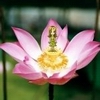| 图片: | |
|---|---|
| 名称: | |
| 描述: | |
- let us have a discussion: 宫颈液基 vs 传统刮片
Recently I noticed some topics related liquid based cytology (LBC) and conventional Pap smears (CP) in this website. We know that the price of LBC is higher than CP.
Hope we can discuss the disadvantage and advantage of both methods.
What methods are used in your hospitals?
What method you think should be used in China now or future?
Also I will find some data to let you know the main methods used in other main countries. As of May 1, 2008, the United Nations has 192 members. In China we mention 国外, which include more than 190 contries.
Thanks
cz
-
本帖最后由 于 2009-03-07 23:04:00 编辑
-
本帖最后由 于 2009-03-14 13:04:00 编辑
试译一楼的内容,译得不当之处,请大家指正:
最近我注意到本站一些主题关于液基细胞学与传统巴氏涂片,大家知道液基的价格高于传统巴氏。我们希望能讨论一下两种方法的优缺点。
请问,你的科室使用哪种方法?你认为现在或将来哪种方法更适用于中国?
我也愿意找到一些数据说明在其他的一些国家和地区使用的主流方法。
截至2008年3月1日,联合国有192个成员国,而在中国我们所谓的国外,包括了190多个国家。(谢谢赵老师和夫人对197译文的帮助!)
谢谢!

- “人生没有彩排,每一天都是现场直播”
-
本帖最后由 于 2009-03-07 23:59:00 编辑
|
宫颈液基细胞学在中国以前所未有的速度大力推进,在液基细胞的推进工作中,广告语是液基细胞学新时代的革命性里程碑.把传统刮片说的一无是处,而实际上许多地方根本连传统涂片都看不好,直接就上了液基,许多人非常热衷于搞液基.液基在中国收费150-250元不等,里边的内容只有天知道.,传统的刮片只收30元.所以液基开展的非常火. 按照中国的实际情况,富有地区可以开展液基,贫困地区不应该上液基,应该是培养病理医生的水平为主.传统刮片水平看好了,解决问题绝不比液基差.我们试想一下,一个看完病可能没有回家路费的人,又做什么液基啊! |
As of May 1, 2008, the United Nations (联合国) has 192 members (成员国). In China we mention 国外, which include more than 190 contries。
I spent 5 minutes with my wife's help to type few Chinese words above. My teachers did not teach me the spelling well in the elementary schoos, or I forget the chinese spelling. Ha ha.
I mentioned that because we Chinese always say 国外.......
One hospital cannot represent one country. One country cannot represent 国外.
In term of Pap test at least 95% or more of the Pap test in the US are 液基. This does not mean 液基 is used in all 国外 hospitals.
It is the same that conventional Pap may be maily used in some 外国. It does not mean conventional Pap is used in all 国外.
The United States=America, a federal constitutional republic comprising fifty states and a federal district (50 states + washington DC). The state is similar to the provience (省), but the state has more power than 省 in China.
The United nations=联合国。 Nation=contry here.
国内细胞学混乱的很。而且真的是越来越离谱。
北京搞两癌筛查,大家都去参加宫颈液基细胞学培训,考试过关,才能参加筛查。但是听说有的医院病理医生全军覆没,考试都不过关,依然也每天在发液基细胞学报告。多可怕!
最后听说,两癌筛查,政府拨款不够用,最后预计都要做成传统涂片,而且还听说要巴氏五级分类发报告!上星期一位经销商来找我,问我们能否接受两癌筛查的片子,我说:您还是饶了我吧,巴氏五级还用啊,打死我也不接,谁爱接收谁接收。
我想政府的想法是好的,但是真正执行下去就变了味道。

- 没有完美的个人,只有完美的团队
-
1、可以肯定,液基是一个技术进步。一是它相对传统涂片来说提高了制片质量,传统涂片质量完全掌握在妇科医生手里(指涂片环节),标本具有不可重复性,一张涂片失败,就不可能再有标本用于制片,我们通过在农村做的涂片看大约有10%的片子是没有多少细胞,或者全是血液或炎细胞,再就是固定不良的涂片更多,因为固定环节也由取样医生掌握,每个取样医生的理解和责任心不一样,制作的涂片质量也不一样;二是液基只要取到了细胞,即使在制片过程中失败了,标本还可重复;三是它减少了 看片的干扰因素,可以相对减少看片医生的工作强度。
2、液基并不是人人都能享受的,液基的高价格注定不适合在农村地区推广,即使政府拨款,贫困地区也不可能,比如我们在农村宫颈癌筛查,拨款最多10-20元/人,谁还奢望做液基?不过 其实国产液基价格应该没那么高吧,最起码他的研发投入没国外的多,虚高定价在医药行业是一个死结,不能望奢某一方面来解决。
3、如果涂片制作都合格,传统制片和液基在筛查的敏感性和特异性方面应该没多少差别(没做统计,凭感觉说的)。
4、细胞学领域的乱,我觉得是中国的国情决定的,过去长期细胞学好像不受重视(主要是经济价值不高),中国是一个人口大国,如果政府现在重视宫颈癌的筛查,短期不可能培训出那么多合格的细胞学医生,好的专家都在城市,至少现在政府在作这个事了,那么规范也就不远了。
5、商家推广液基的最大贡献是让细胞学领域红火起来了。
休息的时候没事做,也来信口开河说几句,就当作闲聊。
-
I read conventional Pap smear slides for one year when I was a cytopthology fellow. Now 99% of Pap tests are Thin Pap in our hospital. We have 110, 000 Pap tests/per year. In my experience, it is much more easy to read liquid based Pap than conventional Pap if we do not consider the cost. Also pathologists can save much more time to read LBC pap than conventional Pap, small area vs entire slide. I will show you some study data in term of senstivity or specifity about the two menthods later.
| 以下是引用cqzhao在2009-3-8 23:40:00的发言:
To 法师 : 休息的时候没事做,也来信口开河说几句,就当作闲聊。 you have excellent points. Your name also means that you are a powerful person. If you are more serious, you will have more excellent points. Kiding. |

Dr. Zhao brought an excellent question for discussion. When I was doing my cytopathology fellowship, we had 50% smears and 50% ThinPrep. Now, in our practice, it is 99% ThinPrep. The major advantage of ThinPrep in term of clinical management is that you can do reflex HPV DNA test on patients with a ASCUS pap. You are not going to be able to do that on the conventional smear unless you co-collect some and put into liquid during the Pap. The reflex HPV DNA test for ASCUS is recommended by the American Society of Colposcopy and Cervical Pathology. Last year, I visited University of Calgary in Canada, the Canadian system is different from the US and they don't have the reflex HPV test for ASCUS. However, their Paps are 90% ThinPrep anyway.
I have to admit that on morphology for glandular lesions on Pap, I would prefer conventional than ThinPrep, provided the clinicians know how to do the smear (not the air-dryed poor quality smears).
-
Thank Dr. Chen's input. What do you think, our Chinese pathologists in China? I know we may have not condition to do LBC, even conventional Pap for many people in countryside. I hope we as pathologists will know some situation outside China and know the good and bad parts of two pap test methods.
-
In big cities in Canada, most Gyn slides are LBC, very few conventional smear but in the small cities, still conventional smear because of small volume of specimen. In the hospital I worked, all Gyn slides are LBC, still a few consult cases were conventional smear. HPV will be done based on clinical request, most cases were ASC and LSIL.
LBC Gyn slides are easy to read but conventional Pap shouldn't be misunderstand in China. Using LBC or conventional smear is depending on financial situation and volume of cytology specimen.
好热闹啊!我恨死传统图片了,多叫很多ASCUS仅仅因为细胞保存质量不好,又不能做high risk HPV test. 说实话,我知道国内细胞病理的实际情况,我愿意到需要的医院volunteer短暂时间和你们交流。去年到一家医院10天年轻医生基本学会了正常宫颈管上皮细胞和子宫内膜细胞。我很幸运能接受1年细胞病理专科训练和住院医生训练。我现在每天看几十到100张异常pap smears, 什么罕见病都成常规了,很愿意和大家分享。
我工作单位〉98%是液基,很少传统涂片。
I don't comment much on some cases posted here because i know for sure that the selection of fields for picture and posting the photos tristed the truth on slides some times, i don't want to misquide you. In my work, i am quite sure what i call.
液基细胞学和传统涂片比起来优点很明显,病理医生看得更清楚了,阳性率提高了,在我们这里也是这样,我们使用的是Thinprep2000制片系统,阳性率统计大概是7%左右,很多都有活检组织学的追随结果。
我们也做传统涂片,因为不是所有的病人都能接受液基细胞学的价格,我们的传统涂片制片质量一般,如果按满意度来评判,大概约40%左右为不合格标本,我们的传统涂片阳性率约1.6%,不到2%。
根据我的阅片经验,我觉得如果传统涂片做得好——取材合适、固定及时、染色优良的话,它的诊断提示作用优于液基细胞学制片,因为传统涂片往往有大量的异常细胞存在。而液基细胞学片子如果经验不足,比较容易漏诊,因为细胞更小,异常细胞分散。
目前液基细胞学在中国大行其道,热闹非凡,这是各方利益驱逐使然。我觉得它带来的非常明显的好的作用就是大家开始注意细胞学诊断的学习和水平的提高了,而在这之前,很多阅片医生是跟着感觉走来发报告的。临床医生也不把这样的诊断结果放在眼里,我亲耳听过一个省级医院的妇科主任讲座时说过:“我们这里的传统涂片几乎没有阳性结果”。
在中国,我觉得这两种方法需要并存,但是医生的阅片培训和准入亟待推行,这样才能真正发挥其作用。

知之者不如好之者,好之者不如乐之者。(语出幽梦影)
-
本帖最后由 于 2009-03-19 18:37:00 编辑
From 城北: 液基细胞学和传统涂片比起来优点很明显,病理医生看得更清楚了,阳性率提高了,在我们这里也是这样,我们使用的是Thinprep2000制片系统,阳性率统计大概是7%左右,很多都有活检组织学的追随结果。
我们也做传统涂片,因为不是所有的病人都能接受液基细胞学的价格,我们的传统涂片制片质量一般,如果按满意度来评判,大概约40%左右为不合格标本,我们的传统涂片阳性率约1.6%,不到2%。
Clearly we can see the advantage of LBC than 传统涂片 based on the positive rate from your hospital. Three times more are huge different. In other words you may miss a lot of positive patients based the results of 传统涂片.
What do you mean positive rate? Is it atypical Pap test rate including all ascus, asc-h, sil ....?


















